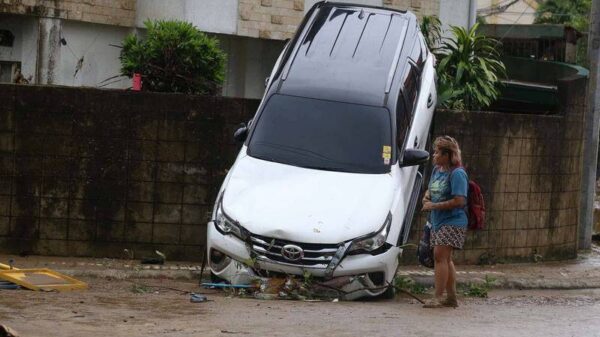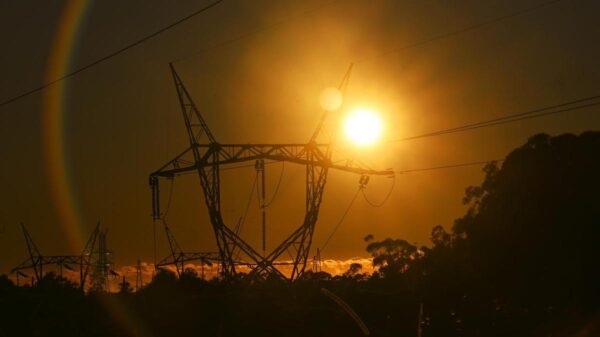The death toll from Typhoon Kalmaegi in the Philippines has tragically increased to 40, according to local officials. The powerful storm, which made landfall early on March 15, 2024, has brought heavy rains and severe flooding to the central region, inundating homes and forcing thousands to evacuate.
Although Kalmaegi, known locally as Tino, has weakened since its initial impact, it continues to generate winds of 130 km/h and gusts reaching 180 km/h as it moves across the Visayas islands toward northern Palawan and the South China Sea. Most of the casualties occurred in the central province of Cebu, with one death reported on the nearby island of Bohol, according to Ainjeliz Orong, the provincial information officer.
Rescue operations are ongoing, with numerous individuals still reported missing. Orong mentioned that the rise in reported fatalities is due to ongoing search efforts and the challenging conditions faced by emergency responders. “Search and rescue efforts continue and there are missing and unaccounted individuals,” Orong said, noting that the majority of deaths have resulted from drowning and falling debris.
Tens of thousands of residents have been relocated across the Visayas region, as well as parts of southern Luzon and northern Mindanao. The Philippine disaster agency is working to assess the extent of the damage and provide assistance to those affected. The typhoon is expected to exit the Philippines late on March 16 or early on March 17.
In Cebu City, floodwaters had begun to recede by late Tuesday, yet many areas remain without power and telecommunications services are intermittent. A journalist from Reuters in Cebu reported that rescue workers are navigating knee-deep waters in boats to reach stranded residents. Images from the Philippine Red Cross depict homes in Liloan town, located on the northern outskirts of Cebu City, almost completely submerged.
The state weather agency, PAGASA, indicated that the combination of Typhoon Kalmaegi and a shear line has caused heavy rainfall and strong winds across the Visayas and surrounding areas. Over 180 flights to and from affected regions were canceled on March 15, while maritime authorities advised vessels to seek safe harbor immediately.
PAGASA also issued warnings regarding the potential for “life-threatening and damaging storm surges” that could exceed three meters along coastal and low-lying areas in central Philippines, including parts of Mindanao.
As the Philippines faces the aftermath of Kalmaegi, neighboring Vietnam is preparing for the storm’s arrival. The Vietnamese government has indicated that the typhoon is forecast to make landfall in its central regions on the night of March 16. These areas have already experienced severe flooding resulting in at least 40 fatalities and six missing persons over the past week. “This is a very strong typhoon, which continues to strengthen after entering the East Sea,” the government stated, referring to the South China Sea.
The impact of Typhoon Kalmaegi highlights the ongoing challenges posed by severe weather events in the region, as communities strive to recover and respond effectively to the immediate needs of those affected.


































































